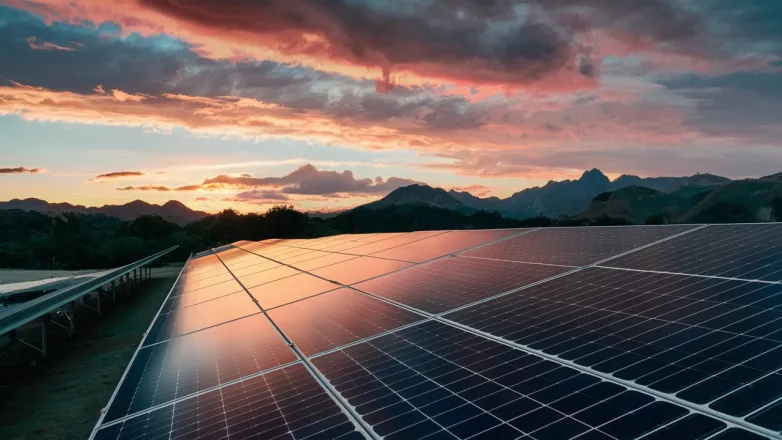Breakthrough Perovskite Layering Boosts Solar Cell Durability
- Revolutionary 2D perovskite layer boosts solar cell efficiency to 25.3%, promising enhanced stability and paving the way for commercial breakthroughs in solar technology.

Researchers from Cornell University, Duke University, and Brookhaven National Laboratory have developed a two-dimensional (2D) perovskite layer that can be applied to a three-dimensional (3D) perovskite, creating a durable and efficient solar cell. By achieving a perfect lattice match between the 2D and 3D perovskites, the team enhanced the solar cells' stability and performance. The new 2D perovskite uses formamidinium (FA) as a cage cation, overcoming the instability issues of methylammonium (MA) and achieving a sunlight-to-electricity conversion efficiency of 25.3% with minimal degradation over 50 days of testing.
The breakthrough involves selecting organic cations, or ligands, that align with the FA cage cation and the crystal structure, allowing the 2D perovskite to balance conductivity and stability. This innovation addresses the long-standing challenge of perovskite instability, which has hindered their commercial use in solar cells. The research, supported by the National Science Foundation, highlights the potential for accelerated progress in perovskite solar technology by understanding and applying molecular-level insights. The study's findings could pave the way for more durable and efficient solar cells, advancing the commercialization of perovskite technology.
How does the 2D perovskite layer improve solar cell stability and efficiency?
- The 2D perovskite layer acts as a protective barrier, reducing the degradation caused by environmental factors such as moisture and oxygen, thereby enhancing the overall stability of the solar cell.
- By achieving a perfect lattice match between the 2D and 3D perovskites, the interface defects are minimized, which reduces recombination losses and improves the efficiency of charge transport.
- The use of formamidinium (FA) as a cage cation in the 2D perovskite layer addresses the thermal and chemical instability issues associated with methylammonium (MA), leading to more stable solar cells.
- The 2D layer helps in passivating surface defects and traps in the 3D perovskite, which can otherwise lead to non-radiative recombination and efficiency losses.
- The selection of organic cations or ligands that align with the FA cage cation enhances the structural integrity and electronic properties of the perovskite, contributing to improved solar cell performance.
- The 2D perovskite layer can improve the moisture resistance of the solar cell, which is a critical factor for long-term operational stability.
- The innovation allows for a balance between conductivity and stability, ensuring that the solar cell maintains high efficiency while being robust against environmental stressors.
- The enhanced stability and efficiency of the solar cells with the 2D perovskite layer could accelerate the commercialization of perovskite solar technology, making it a more viable alternative to traditional silicon-based solar cells.
Also read

